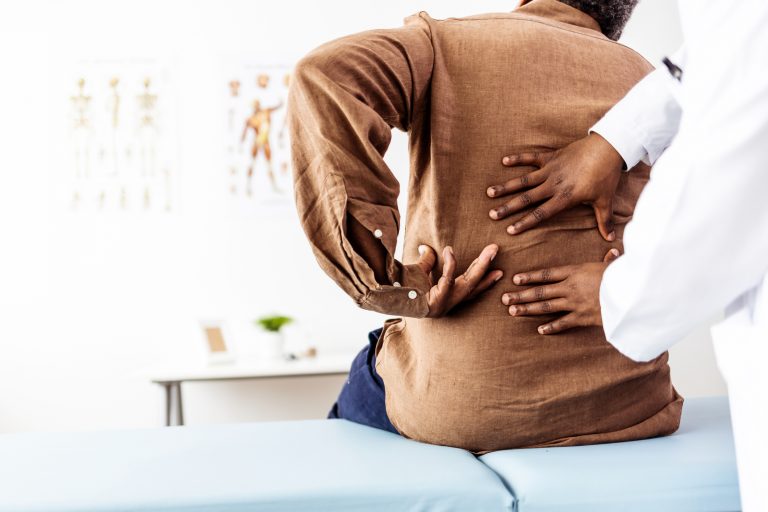What is a Prolapsed Disc?
A prolapsed disc occurs when the soft center of a spinal disc pushes out through a tear or weak spot in the tougher outer layer. An irritated spinal nerve may cause painful and debilitating symptoms.
An important first step toward pain relief after being diagnosed with a prolapsed disc is to learn more about the condition. Educating yourself about the causes and symptoms of a prolapsed disc can help you make a more informed decision about treatment and get you back to the healthy and active lifestyle you deserve.
What Causes a Prolapsed Disc?
The most common cause of a prolapsed disc is the natural degeneration of the spine. Over time, discs lose water content and elasticity, making them less able to cushion the vertebrae. The gradual weakening of the discs, coupled with the constant pressure from the spinal column due to movement and weight of the upper body, can cause the outer layer of a disc to tear and the disc to prolapse. Other contributors include body mass, injury, posture, and a job or hobby that involves repetitive movement.
Symptoms
A prolapsed disc does not necessarily cause symptoms. Pain and other problems are a result of irritation or compression of surrounding nerves by the disc. This nerve compression can cause:
- Pain
- Muscle weakness
- Numbness
- Tingling
- Burning sensation
These symptoms can occur at the location of the pinched nerve or along the nerve pathway into the upper or lower extremities.
Treatment with BEST Health System
Conservative treatments can be very effective methods of pain relief for this condition. In fact, many patients can find relief from physical therapy or pain medications. However, surgery is an option if conservative treatments do not work.
Contact BEST Health System if you’ve been unable to find relief after months of conservative treatments. We offer minimally invasive spine surgery, including decompression and stabilization procedures, to remove pressure on the nerve from a prolapsed disc that is causing your pain. Our procedures are performed on an outpatient basis and involve muscle-sparing techniques. This offers a safer and more effective alternative to traditional open spine procedures.
